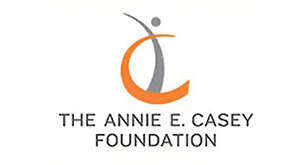WHAT IS MENTORING AND WHY DOES IT MATTER?
Mentoring involves a supportive, caring relationship between an adult and a young person, either established formally through a program or occurring naturally such as with a neighbor or coach. Formal mentoring relationships may be offered through a school‑, community- or faith-based program. These typically match an adult with a youth and create a structured mentoring experience with organized meetings and activities. Whether established formally or informally, quality mentoring relationships help young people access opportunities and offer support and guidance as they navigate life challenges. Mentors can help close opportunity gaps often observed for youth growing up in poverty or in disadvantaged communities by connecting them with new networks, resources and possibilities that otherwise may not be available.
The research is clear: Relationships play a powerful role in youth development and success. Young people need stable, caring relationships with adults in order to thrive, and mentors can provide this crucial support. In light of the alarming national youth mental health crisis, mentoring is poised to be a key part of the solution to this public health problem. Studies have found that mentoring during childhood can strengthen mental health.
HOW IS YOUTH ACCESS TO MENTORS CHANGING?
While mentoring relationships have become more common in the last 30 years, new data show a decline in the prevalence of mentoring. A 2023 national study led by MENTOR found that the share of youth ages 18 to 21 who report having had a mentor while growing up dropped six percentage points over the past decade, from 66% in 2013 to 60% in 2022. Reports of having a naturally occurring mentor, rather than a program-provided one, dropped by 13 percentage points. More than 1 in 3 (35%) young adults say they grew up without the support of any mentor.
The decline is at least partially explained by the COVID-19 pandemic, which hindered youth access to mentors for long periods of time by closing mentoring programs, schools, after-school and sports programs, community events and other activities where youth could encounter mentors. Extended family gatherings stopped for a period as well. Experts also point to the pandemic’s economic crisis and increasing socioeconomic inequality as other possible causes of the decline, recognizing that adults who are financially struggling may not have the time or resources to serve as volunteer mentors.
ACCESS TO MENTORS IS INEQUITABLE
Across the nation, 86% of children ages 6 to 17 have at least one adult mentor in their school, neighborhood or community who provides advice or guidance, according to the 2022 National Survey of Children’s Health (NSCH). However, access to mentors varies by socioeconomic status, household language, where children grow up and other factors.
- By income level: Children and youth from lower-income households are less likely to have mentors than those from more affluent households, a reality that the NSCH and other studies consistently demonstrate. For instance, the NSCH found that the share of children ages 6 to 17 who had a mentor increased with income level as follows:
- 77% of kids living below the federal poverty level (which was $29,678 for a family of two adults and two children in 2022);
- 82% of kids between 100% to 199% of the poverty level;
- 88% of kids between 200% to 399% of the poverty level; and
- 92% of kids living at or above 400% of the poverty level.
- By parental education level: Children’s access to mentors also differs greatly by parental education level, with mentors available for about two-thirds (68%) of kids ages 6 to 17 whose parents have less than a high school education compared to 91% of kids whose parents have a college degree or higher, according to 2022 data.
- By language: Children with a primary household language other than English are much less likely to have the support of a mentor, at 69%, versus 89% for children ages 6 to 17 in households with English as a primary language in 2022.
- For children of immigrants: Similarly, less than 8 in 10 (77%) children living with a parent born outside of the U.S. had a mentor compared with 9 in 10 (90%) kids of U.S.-born parents.
- By state: Looking across the country in 2021–2022, youth access to mentors varied widely by state, ranging from about three-fourths (76%) of Nevada teens ages 14 to 17 to nearly all teens (96%) in North Dakota and Montana, according to NSCH data on the KIDS COUNT® Data Center.

